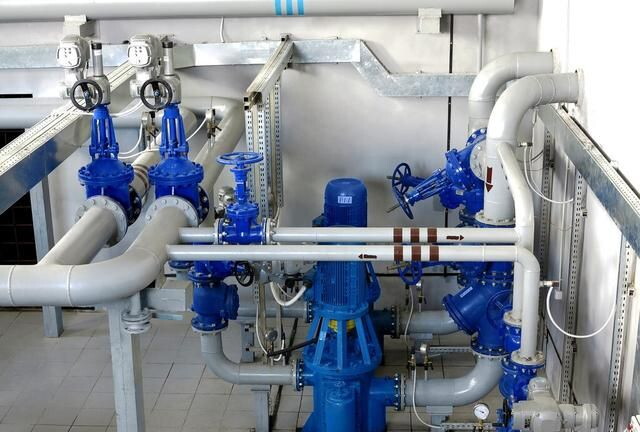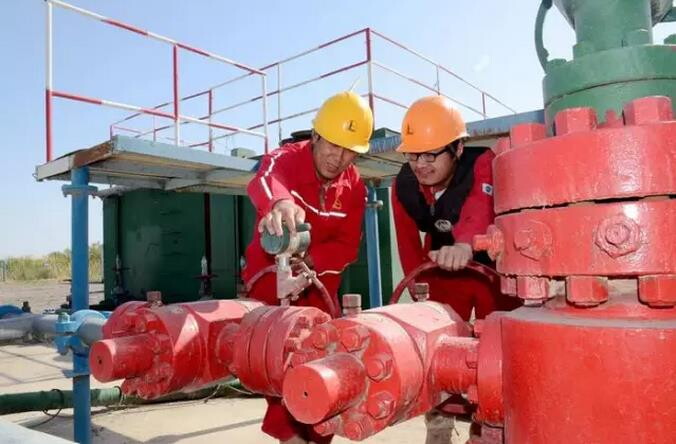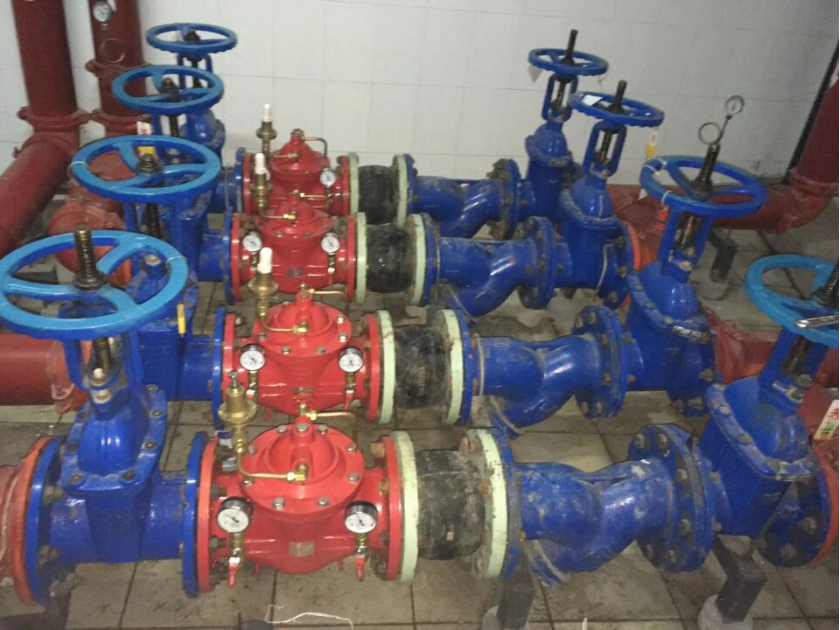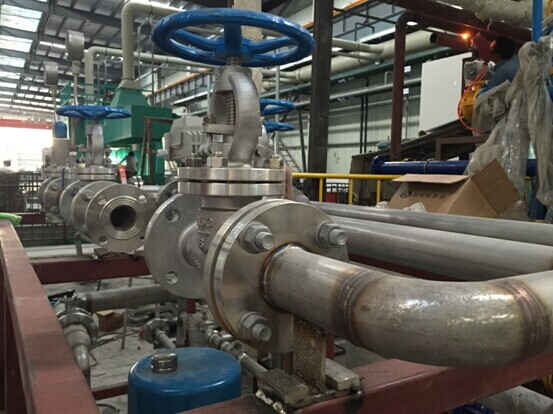In my early twenties, I had no idea what "valve stem" and "graphite packing" were; they were merely technical terms as far away as the stars in the night sky. Unfortunately, though, my journey eventually took me into the world of industrial applications, where I quickly learned all of these words by heart. Allow me to explain to you the essence of valve packing—the silent protagonist in the orchestra of industrial and plumbing machinery. Envision a heart that beats steadily, its veins free from obstructions and friction. In the intricate circulatory system of equipment, valve packing guarantees this.It is more than just a basic part; it is a lifesaver that keeps valves from leaking and protects them from wear and tear so they may continue to function properly even in extremely hot conditions. Let's now take a closer look, shall we? When we examine this crucial part more closely, we see that the materials and styles of valve packing are just as different as the valves themselves. Valves are found in everything, from the soft turn of a kitchen faucet to the boom of steam in power plants, but they are frequently disregarded. However, not by us, not today. We're giving it the attention it merits today.

The purpose of valve packing design and operation is to create a seal that serves as both a facilitator and a protector, rather than just a barrier. It is the silent guardian that ensures the valve operates with integrity.
The primary function of valve packing design is to avoid leaks. The packing serves as the valve's protective moat, and the valve body serves as its stronghold. The packing material—graphite, teflon, or a hybrid—is selected based on its capacity to flex and conform to the shape of the stuffing box and stem, resulting in a tight seal. Holding the line where pressure and fluid try to escape, this seal is the front-line fighter in the struggle against leaks.
A valve packing assembly's parts function together like a well-rehearsed orchestra. The packing material, the packing gland, and the stuffing box are the musicians, and when they work together, they create a performance that stops leaks and wear. The packing nut functions as a conductor, making sure that the compression is just right—not too tight, nor too loose. The packing is the unsung hero in the overall scheme of valve design, frequently going unnoticed until it breaks. Its design refers to the fundamental purpose of a valve, which is to control flow without fail or falter.
There are many different kinds of valves, each with its own personality and set of requirements, to be found among the many industrial hardware marketplaces, among the clangs and echoes of metal. They are the orchestrators of control inside the pipelines, the gatekeepers of flow. And just as an experienced gardener can distinguish between roses and tulips, so too can a proficient mechanic identify the minute distinctions between rotational and sliding stem valves.
These are the workhorses, the valves that open and close with nearly human accuracy. Consider the motion of a pianist's fingers as they slide over the keys; that is the sliding stem valve. It requires a valve stem packing that is adaptable, able to loosen up during the gentler notes and remain firm during the intense crescendos. Teflon packing frequently takes the stage in this situation because it provides a good mix of strength and versatility.
Next, there are rotary valves, the eccentrics of the valve industry, rotating on their axis with a penchant for the spectacular. These valves provide a level of delicacy to the operation by modulating flow rather than just stopping and starting it. Here, the packing needs to correspond with this dynamic movement. Sturdy graphite packing that can tolerate friction without losing its cool is frequently used in this situation.
As we navigate the many valve aisles, we begin to recognize the various valve packing options. In the overall scheme of things, every type—from the simple rope shape to the more intricate braid-over-braid—has a purpose. They are the main vocalist's unsung back singers—important but frequently out of the spotlight.

Now let's talk about the twisted packing. It's like an ancient rope, twisted with wisdom from the past, ready to fill in the blanks and offer a straightforward yet reliable seal. This kind of packing is frequently used in settings where simplicity and usefulness are valued more highly than complexity.
Square-braid packing goes one step farther and provides a more substantial choice. It's dependable and cozy, much like the heavy, cozy quilt that keeps you toasty on a chilly winter's night. When the valve's duty cycle necessitates a more durable companion, this packing is recommended.
Then there is the engineering marvel known as braid-over-braid packing, which is braided twice to add an additional layer of security. In the world of packing, it's the armored knight, prepared to fend against the worst circumstances.
A wonder of human ingenuity, the interlocking braid packaging is. It locks like the complex patterns of a Celtic knot, forming a strong barrier against leakage.
| Type of Packing | Material Composition | Characteristics | Best Used For |
| Twisted Packing | Various fibers twisted into rope form | Flexible, easy to install, simple design | Valves with low to moderate pressure and temperature conditions |
| Square-Braid Packing | Braided fibers in a square cross-section | Dense, more robust, good for higher pressures | Valves with higher duty cycles and where a firmer seal is needed |
| Braid-Over-Braid Packing | Braided fibers over another braided layer | Very dense and durable, excellent resistance to extrusion | High-pressure valves where extra strength and longevity are required |
| Interlocking Braid Packing | Multiple braided fibers interlocking | Exceptional strength, prevents leak paths, complex design | Severe service valves facing high pressures and temperatures |
Among valve packing materials, graphite packing materials are unique. Imagine a substance that is as resilient as time itself, unfazed by the intense heat it experiences. Graphite is a classic material for packing because of its heat resistance and stem wear-reducing properties, which make it the preferred option for numerous industrial uses. It is the sage elder who endures and provides protection.
Next, there are Teflon (PTFE) packaging materials, which are a modern wonder with unmatched chemical resistance. Teflon is the armor against corrosion, just as graphite is the shield against heat. It's like a superhero suit for valves, making even the most hostile substances submit to its shield.
Ceramic and Kevlar packing come into play in the more extreme situations, where even graphite and Teflon can fail. These materials are the unique powers of the packing industry, created for tasks too difficult for other materials to handle. They provide an unmatched level of toughness and endurance, prepared to withstand the most extreme pressures and temperatures.
Rubber and fabric packaging provide a straightforward yet efficient sealing solution for the commonplace faucets and fixtures that we come into contact with on a daily basis. They are the unsung heroes of the home, preventing drips and leaks from becoming a nuisance in our houses.
Not to be overlooked are the hybrid packing options. These are the trailblazers, the combinations of elements that make a composite that is stronger than the sum of its parts. They are the specially made suits of the packing industry, made to meet the particular curves of every application. Every material in the vast tapestry of valve packing tells a unique tale of tenacity, resistance, and dependability. The correct packing material selection is a work of art that requires a careful balancing act between the intuitive knowledge of a valve's nature and the scientific comprehension of its properties.
Lubricating and adjusting a valve are vital steps in the complex dance of keeping it healthy. The subtle brushstrokes on a painting, or the fine tuning of an instrument, are what give life to the picture. In the context of valve packing, lubrication is similar to the water in a stream, facilitating easy passage over the underlying pebbles. By lowering friction—the enemy of longevity—it prevents premature deterioration of the packing material. A well-lubricated valve stem moves as smoothly as the baton of an experienced conductor, making it a pleasure to use. The proper lubricant is an essential ally in the pursuit of longevity because it not only makes the process easier but also increases the packing material's lifespan. On the other side, adjustment is the skill of precisely balancing ease and compression. If the valve stem is too tight, it will not budge; if it is too loose, leaks could become a serious concern. This delicate balance calls for the steady hand of experience. Precise adjustment of the stuffing box guarantees that the valve packing keeps an ideal seal, eliminating leaks and permitting unrestricted movement of the stem. In a symphony, it's the last note that guarantees the music will continue to play perfectly. Lubrication and adjustment are more than just maintenance duties when it comes to valves; they are the protectors of functionality. They guarantee that the equipment lasts for decades rather than just a few years, that the valve continues to function with the elegance and efficiency for which it was intended, and that the packing continues to be a stronghold against leaks.
 The argument between live loading packing and stationary loading packing is like having to decide between a fresh buddy who shows promise and an old friend who you can trust. Both have advantages of their own and have a place in the hierarchy of valve sealing methods.
The argument between live loading packing and stationary loading packing is like having to decide between a fresh buddy who shows promise and an old friend who you can trust. Both have advantages of their own and have a place in the hierarchy of valve sealing methods.The conventional method, known as stationary loading, involves using a static system to hold the packing material in place while it is in use. This system is not flexible. It resembles an unwavering, deeply rooted oak tree. This approach has proven effective for many years, offering a dependable seal that can endure through numerous cycles of the valve's life with adequate maintenance. anything embodies the saying "Don't fix it if it ain't broke."
However, live loading adds a dynamic component. In order to keep the packing under constant pressure while correcting for wear and thermal expansion over time, it uses springs or other mechanisms. This is the mechanism that adjusts and responds to the valve's needs, providing a continuous seal even when circumstances change. It's the willow that bends in the storm. In valve packing, this is a more recent concept that recognizes and accounts for operational unpredictability.
The two main pillars that support valve packing longevity are maintenance and durability. A well-maintained valve with the appropriate packing can endure beyond equipment generations as a legacy. As different as the valves themselves are the methods employed to keep a long-lasting seal, yet they are all united by the necessity of routine inspection and prompt action. It's similar to taking care of a classic car in that it calls for an awareness of its peculiarities and requirements, a willingness to get your hands filthy, and the foresight to solve problems before they become more serious.
Valve packing selection is a painstaking procedure in which each consideration is given the same careful consideration as a jeweler would when evaluating a gemstone. There are numerous elements that influence packing selection. Environmental considerations, valve operation, fluid type, temperature, pressure, and type all play a part in the decision-making process. It's a challenging puzzle that requires a solution specific to the difficulties presented by each application. It takes accuracy to match the packing to the application and kind of valve. It's similar to trying to locate the ideal lock key. The proper fit guarantees a seal that is long-lasting and operationally robust, as well as efficient and effective.
Valves are packed with minute details that add up to a lot. In our world, having knowledge of your subject means that everything functions flawlessly. We've learned how important it is to choose the correct materials, how to grease and adjust everything just right, about the new technology known as live loading, and how important it is to monitor everything and address issues as we've looked at the essentials for durable, long-lasting seals.
In summary, selecting premium materials and maintaining proper care are essential to getting valve packing right. Take a look at JONLOO; their packings can withstand high heat and pressure, extending the life of seals. Select the best packaging, such as Teflon against abrasive chemicals or graphite for hot materials. Maintain tight fitting and well-lubricated valves for long-lasting performance. That's clever work. If you team up with experts like JONLOO, you'll be successful. They are knowledgeable, which is essential for a task effectively done.

